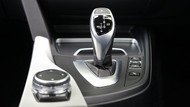How Does the Parking Brake Work?
1st Oct 2020

Parking Brakes
The parking brake is a mystery to many drivers. No matter what type of vehicle you drive, you can stop it from moving by engaging the parking gear. Around the gearshift, however, is a lever for the parking brake. While the parking brake may sound like an unnecessary feature, it serves several important purposes.
Overview of the Parking Brake
Also known as the hand brake, the parking brake is a braking component that’s designed to maintain your vehicle’s position when parked. It consists of cables that typically run to the rear brakes. When you pull the parking brake, disc-shaped components known as brake shoes will press against the inner walls of the wheels.
The parking brake doesn’t rely on your vehicle’s main brakes to prevent movement. Rather, it uses brake shoes. Brake shoes apply less force, so they won’t wear down your wheels or tires. Engaging the parking brake will apply the brake shoes to your vehicle’s rear wheels so that your vehicle doesn’t move when parked.
Why You Should Use the Parking Brake
If you park on a hill and your vehicle’s parking pawl fails, your vehicle may roll down where it could cause a collision. Assuming your vehicle has an automatic transmission, it will have a parking pawl. The parking pawl is a simple pin-like mechanism that’s used to prevent the transmission from turning when your vehicle is moved from “drive” to “park.”
The parking brake can protect against such collisions by serving as a backup braking system. Even if the parking pawl fails, the parking brake will apply force to your vehicle’s rear wheels to prevent it from moving.
If you have a manual transmission, you should still use the parking brake. Manual transmissions are even more susceptible to movement when parked than their automatic counterparts. Whether you park on a hill or flat terrain, you should use the parking brake to keep your vehicle from moving.
In addition to preventing your vehicle from rolling, using the parking brake will reduce stress on the transmission. Parking your vehicle will place pressure on the transmission. Over time, this pressure can cause its components, including the parking pawl, to degrade. You can minimize stress and pressure on your vehicle’s transmission by using the parking brake.
Contrary to popular belief, you should actually use the parking brake immediately before placing your vehicle into park. Doing so allows for a gentler transition that’s better for your vehicle’s transmission.

